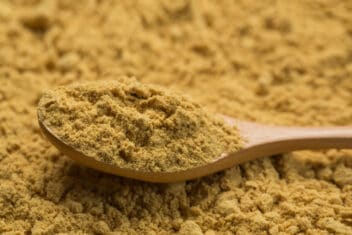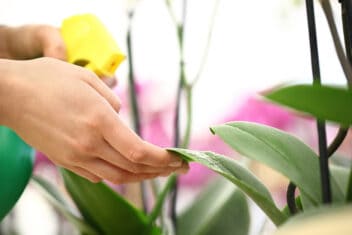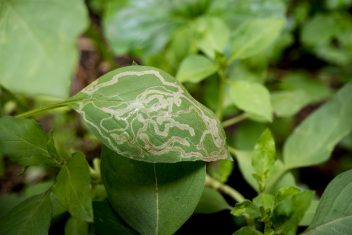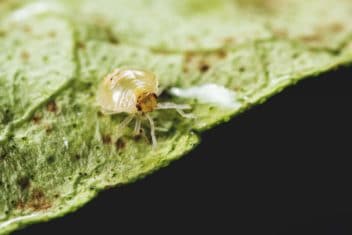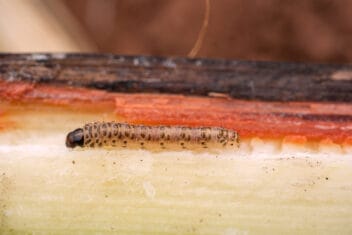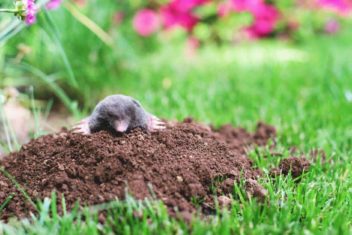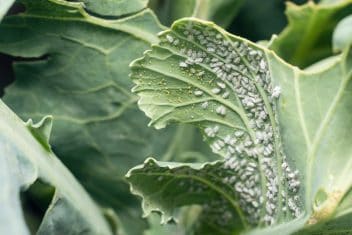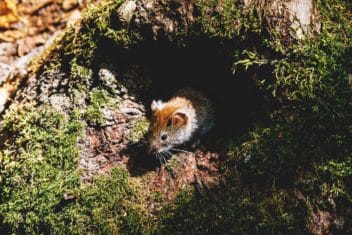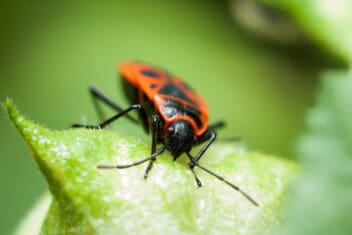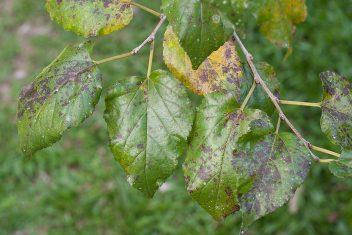It’s annoying when your well-tended houseplants become sick, wilt and struggle. We spend a lot of time and money making sure they get the water, food, and temperatures they need. So what on earth is making them so sick? The answer may be bugs. Mealybugs, to be specific.
Destructive critters like mealybugs can devastate plants if not addressed in a timely manner. Your plants can go from healthy to struggling in a short amount of time with mealybugs, so let’s talk about these common pests on your indoor plants.
What are Mealybugs?
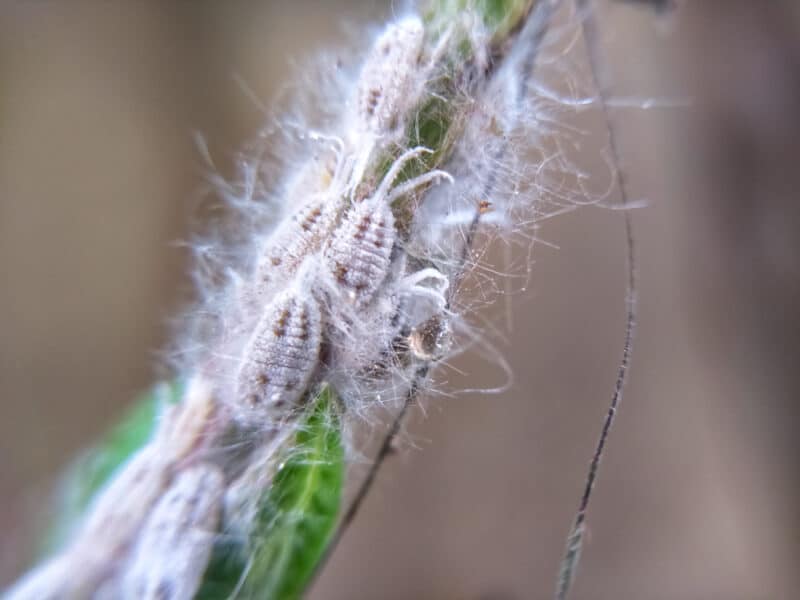
Mealybugs are little insects covered in a waxy white coating and are sometimes covered in hairs.
Mealybugs are sapsuckers. This is part of the reason they do so much damage, but not all. Yes, having the sap sucked out of the plant causes it to suffer, but there are other factors too.
Mealybugs secret honeydew. This is a sweet excretion loved by ants and wasps. On top of that, the honeydew can attract sooty mold. We’ll look at that later.
Mealybugs are always found in colonies that grow in number the longer they infest a plant. This growth in population can be swift.
There are over 170 species of mealybugs in California alone. This is one pest you are very likely to come across in your indoor plant experience.
The Mealybug Lifecycle
It’s important to know the mealybug lifecycle because it makes identification and control easier. It also illustrates how invasive mealybugs can be.
Female mealybugs can lay up to 200 eggs in cotton-like sacs over a 20 day period. These sacs can be pretty much anywhere on the plant including the leaves, twigs, bark, and stems. They can also be under the leaves and in petals.
Baby or newly hatched mealybugs nymphs are called crawlers. They’re yellow or orange, or a combination of both. They don’t have the waxy layer like adults do and they move around a lot. Once they start feeding on your precious plant, they start to form the waxy outer layer which makes them hard to control and eliminate.
The mealybug will molt numerous times while becoming an adult.
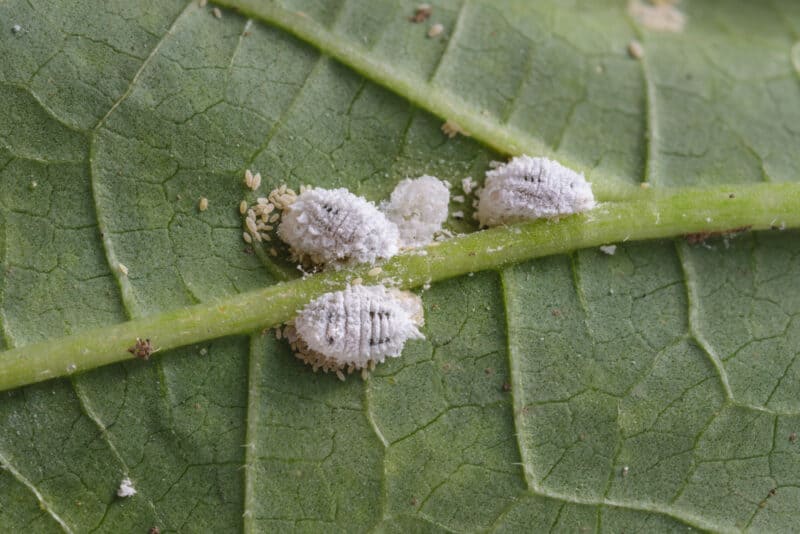
Many common mealybug species will have up to six generations in a year. If the environment is right inside, your plant may host them all year round. Be wary of this in greenhouses.
Signs You Have Mealybugs on Your Indoor Plants
When mealybugs are small in number, the untrained eye may not even notice them. As the numbers grow and the signs increase, you will definitely see their presence. I can honestly say that once you have a mealybug infestation, you will see every little sign next time. Here are some of the signs to look out for:
- A cottony white waxy substance on the plants. Some people say a large infestation of mealybugs looks like there is snow on the plant. A small to medium infestation might make the plant look as though it has dandruff or is dusty.
- Deterioration of the plant. Yellowing leaves, wilting, dieback, or stunted growth for no reason is a sign of something wrong. If this happens to your indoor plant despite otherwise perfect conditions, check for mealybugs.
- Secretion of honeydew. You will notice a clear sticky substance on the plant. Sometimes you may even see this on the floor around the plant. If the container sits on a table, it may be on that as well.
- Sooty mold. As the name says, this is a mold that grows thanks to the honeydew secreted by the mealybug. It is the perfect environment for the mold spore to land and reproduce. It looks like black soot or a thin moldy growth.
- Lots of ants. Ants love sweet things and honeydew is a special treat for them. If you notice a lot of ants on your plant and in the pot, it’s likely they are after the honeydew.
- Wasps around the plant. Wasps also love honeydew thanks to the sweetness.
Be aware that lots of people mistake these pests for a disease because they can look like a bit of white mold.

How to Prevent Mealybugs
Like most pests on plants, mealybugs are easier to control by preventing them rather than reacting to an infestation. Once they appear they can be hard to eliminate.
1. Keep Your Plant Healthy
Make sure your indoor plant gets the nutrition it requires, as well as the right water, and environment. Although this may not prevent the mealybugs completely, a healthy plant will withstand an infestation better while you work on eliminating the problem.
2. Slowly Reduce Feeding and Watering
This may help because many plants will harden off making the plant too difficult for the mealybug to penetrate. It also reduces nitrogen levels in the soil and plant, which also causes hardening. Only do this incrementally and very slowly.
3. Wipe Leaves Often
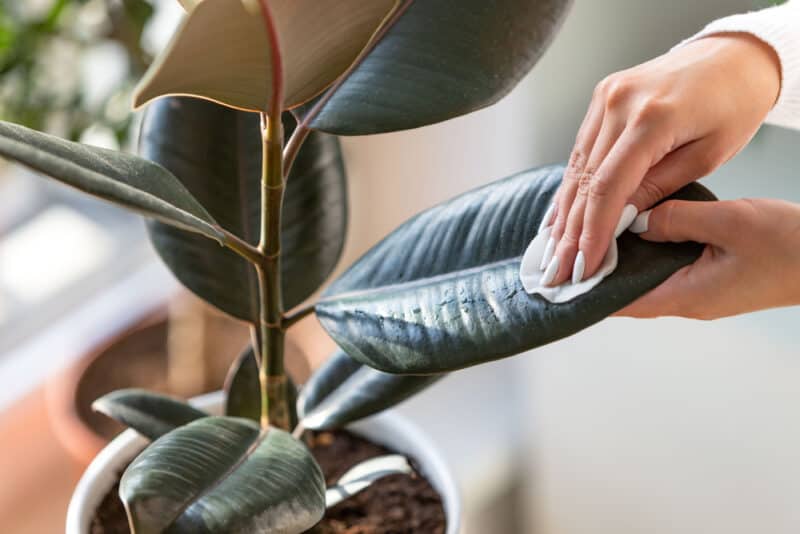
Wipe leaves clean a couple of times a month. You can use a clean damp cloth or a leaf-shine-specific solution. One that contains neem oil provides extra protection.
4. Lower Night Time Temperature
Mealybugs love warmth. That’s why greenhouses and indoor plants are susceptible. If you have a plant that can handle it, lower the nighttime temperature to 60ºF. It’s unlikely many tropical plants and heat-lovers will be able to withstand that though.
5. Avoid Introducing New Plants Until You Know They’re Not Infected
It may sound obvious, but be wary of bringing new plants into your house if you haven’t confirmed they are pest-free. Consider keeping them in a shed, garage, or isolated for a week or so to see if anything develops. Even if you don’t see anything initially, there might be eggs waiting to hatch.
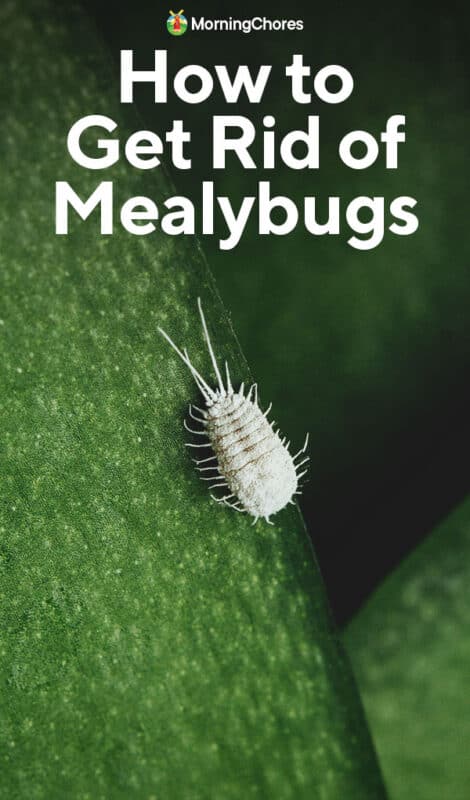
How to Treat a Mealybug Infestation
Once you identify an infestation, it’s time to act because it will continue to grow and damage or even kill the plant. First off, don’t panic. Mealybugs are common pests and there are many ways to deal with light and heavy infestations.
Consider the methods below for any infestation. Decide what is best for your situation and environment, and try several methods if your first attempt doesn’t succeed.
Take your time. Mealybugs are sturdy little pests and it may take a number of attempts to rid your plants of them.
1. Wash the Mealybugs Away
Only some plants will withstand this treatment and it’s really for a light infestation or as a first line of attack for a heavy one. Give the plant a blast of water or use a steady stream of lukewarm water. This is best done outside or in a shower or tub.
When I was a child, I can remember my mother wrapping the pot of a small indoor palm in a plastic shopping bag a couple of times a year. She tied the bag securely around the trunk and took it in the shower with her. The bag stopped the water from getting to the pot and soil.
That palm was the healthiest plant for years.
2. Use a Homemade Insecticidal Spray
This is one of my favorite methods and I will often line all my houseplants up outside for spraying when one plant is infested or just as a preventative.
Mix four tablespoons of dishwashing liquid with a cup of vegetable oil. Mix one part of this mixture to 20 parts of water. Spray on plants using a misting bottle.
Be careful of your furniture and surroundings. Consider doing this outside or in a shower if you can.
3. Use Neem Oil
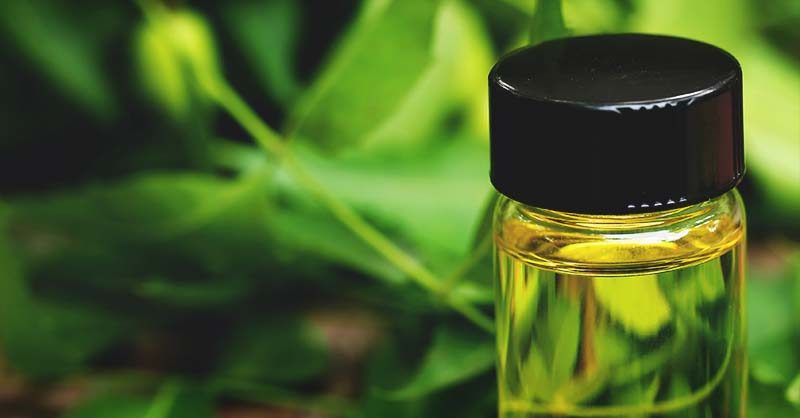
Neem oil is a tried and tested remedy for many pests and diseases on all manner of plants, including houseplants. It’s especially useful indoors because it doesn’t have the potential to leach into waterways or harm beneficial insects as it can outdoors.
That said, I spray my plants outside because of the oily residue and because of the smell. It’s not horrible, but it does have an unusual scent that some people don’t like. Spray in the morning and move the plant back inside in the afternoon, when most of the aroma is gone. Do this in a shaded area.
Otherwise, spray indoors in the morning, but be sure to protect any nearby walls or furniture when you spray.
Be sure to get both the upper and lower sides of the leaves as well as the stem.
Neem oil is not an instant knockdown, though. It interferes with the mealybug’s ability to feed and reproduce, eventually killing them over time. It helps with the sooty mold, as well.
4. Insecticidal Soap
Insecticidal soap can help control an infestation, especially if you catch it somewhat early. Many brands make concentrates that you mix with water, or you can purchase ready-to-spray bottles like the one made by Bonide. Make sure to follow the manufacturer’s directions for houseplant application.
5. Isopropyl Alcohol
For small infestations, you can use isopropyl alcohol to kill the little buggers. Soak a cotton ball with the alcohol and wipe it carefully on the mealybug. This removes their protective wax coating, leaving them exposed to the environment. Over time, they turn brown and die before dropping off the plant.
Avoid getting the alcohol on the foliage as best you can. Test this method on one leaf you’re happy to sacrifice in case the plant is especially sensitive to it.
Houseplants Affected by Mealy Bugs

Essentially, this list could go on forever, but here are some of the most common indoor plants that attract mealybugs. Check all the plants you have.
- Ferns
- Ficus spp. (fiddle leaf fig, weeping fig, rubber tree, etc.)
- Orchids
- Palms (Parlor palm, lady palm, fishtail palm, etc.)
- Poinsettia
- Cactus
- Dracaena spp.
- Aglaonema
- Most herbs
- Hoya
- Jade
- Philodendron
- Pothos
Basically, almost any houseplant is susceptible to an infestation, so if you grow indoor plants, be diligent. You never know when this problem will rear its ugly head. But using a combination of the techniques listed above, you can hopefully get things under control before you lose your poor plant.

